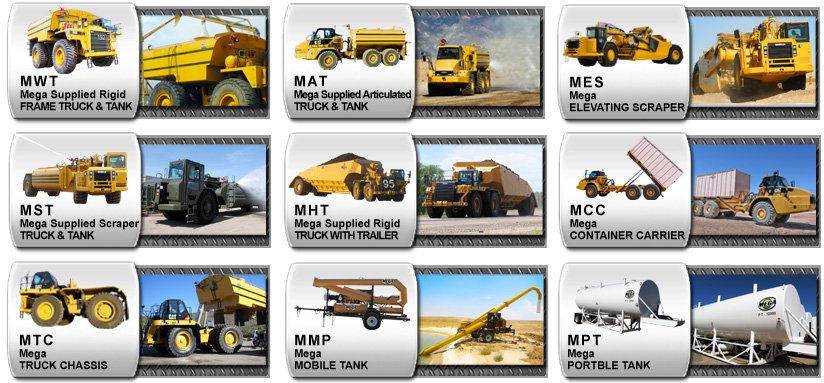Dry Van – Box Trailer
Freight trailers (also called dry vans or simply “boxes”) are designed to carry virtually any kind of boxed, crated, or palletized freight.
Configurations
Standard lengths: 28’, 32’, 36’, 40’, 42’, 43’, 45’, 48’ and 53’. Standard widths: 96”-102” Maximum weight loaded: 46,000 lbs. Standard heights: 12.5’-13.5’ overall. Shorter trailers are typically used for local deliveries or in tandem “truck trains.” Standard axle/wheel configuration: 2-axle/8-wheel. Features and Options
- Roll up doors, rear swing doors. One or two side doors, roller beds.
- When used for produce “Produce Vents” are added and insulated with roofs of Wood, Tin, or Fiberglass.
Reefer (Refrigerated Trailer)
Reefers are insulated and refrigerated trailers designed to transport perishable items. Commodities transported include vegetables, fruits, milk, juices, meats, and poultry Configurations
- Standard lengths: 28’, 32’, 36’, 40’, 48’ and 53’.
- Standard widths: 96”-102”.
- Standard heights: 12.5’-13.5’ overall.
- Shorter trailers are typically used for local deliveries or in tandem “truck trains.”
- Standard axle/wheel configuration: 2-axle/8-wheel. For heavier loads: 3-axle/12-wheel or 4- axle/ 1 wheel configurations are also available.
Features and Options
- Rear swing doors or roll up doors.
- One or two side doors.
- Moveable bulkheads, lift gates, and temperature recording and monitoring systems.
- Single or multi-temperature models.
Flatbeds and Single Drop Decks (Step Decks)
- Platform (flatbed) trailers are designed to transport oversized cargo that normally would not fit into standard freight trailers.
- Platform trailers are used especially for the transport of goods that must be loaded from the side or top of the trailer.
- Standard cargo for platform trailers includes ocean freight containers, machinery, construction equipment, lumber, plywood, steel, pipe, and rebar. Variations
- Standard lengths: 26’, 40’, 42’, 45’, and 48’.
- Extended Lengths: 60’, 65’ and 70’
Double Drop’s and RGN’s (Removable Goose Necks)
- Specialty trailers are designed to transport oversized cargo that normally would not fit onto standard freight trailers.
- Specialty trailers are used especially for the transport of goods that must be loaded from the top of the trailer.
- Standard cargo for specialty trailers includes Heavy Equipment, Machinery, Farm Equipment, Windmills, Transformer’s etc.
Variations
- Standard lengths: 48’ and 53’.
- Extended Lengths: 60’, 65’ and 70’
- Weight allotted for hauling determined by Axle’s included on trailer and configuration
Containers (Skeletal Carrier / Drayage)
- Container carriers are designed to transport standard international cargo containers of 20’– 45’.
- Some models are able to transport non-standard and oversize containers.
Configurations
- Models designed to transport a single specific size container (20’, 40’, 45’, etc.)
- Models designed in adjustable (“zoom”) configurations to work with a range of different sized standard and non-standard containers.
- Configuration / wheel standard: 2-axle/8-wheel. For heavy loads: 3 – axle/12-wheel configura-tions are also available.
- Brackets specially designed to hold the container carrier.
Tankers (Food Grade / Chemicals / Petroleum)
- Tanker trailers are designed for the carrying of a wide range of goods fluids.
- standard cargo carriers include refined gasoline, heating oil, natural gas, and acids, and industrial chemicals, caustic soda, clay and mud and cooking oils, corn syrup, orange juice, milk, and other foodstuffs. Requires some cargo tanker trailers specially designed fluid. For example, carriers designed to transport caustic soda and acids require some aspects and exterior paint and equipment that will withstand the effects of corrosive goods. Variations
- Standard lengths: 40 ‘0.42’ 0.43 ‘0.45’, 48 ‘and 53’.
- Configuration / wheel standard: 2-axle/8-wheel. For heavy loads: 3 – axle/12-wheel 4- axle/16-wheel or configurations are also available. Features and Options
- Multiple Compartments (1-7)
- vacuum pumps
- Measurement equipment
- Insulated Tanks
- Pressure Tanks
- Ladders
- Walkways
- Hose Carriers
- Belly cabinets
Dry Bulk Trailer – Hopper
Use
Dry trailers are mainly used in the transportation of dry commodities such as grain, shelled corn, hulled rice, beans, gravel, limestone (loose and pulverized), and sand. It is a safe transportation method and very useful for long distances. Variations
- Standard lengths: 26’ to 42’.
- Standard widths: 96”-102”.
- Hopper configurations: single, double and triple.
- Open and closed-end configurations.
- Steel and Aluminum models.
- There are available singles, doubles, and three-trailer truck “trains”.
Notes
- Dry bulk trailers use rolled tarpaulin tops rather than rigid tops.
- Typical dry bulk trailers usually use hoppers to unload or empty conveyor systems.
- The international trailer manufacturers produce a variety of models that are designed for different freight configurations.
Logistics Van &Deep Drop Furniture
Use
- Deep drop vans are designed especially for transporting large, bulky and relatively light cargo (weight to volume).
- Deep drop vans are mainly used in the transportation of specific kinds of goods such as furniture, household, and electronics. Variations
- Standard lengths: 45’, 48’ and 53’ overall.
- Standard heights: 13’ 6” overall.
- Standard widths: 96”-102” overall.
- Rear door(s): Standard swing doors.
- Side doors: 1 or 2 side swing doors.
Options & Features
- Using the lower rear surface to facilitate loading.
- Air ride suspension to protect the fragile cargo.
- Compartments belly met and ramps.
Auto Transport Tractor Trailer
Use
Trailers are used to transport auto transport cars, sports cars, small trucks. It is the movement of these goods from the former manufacturing plants to distributors, but the most common ports (Ro-Ro ships) to distributors of the Interior.
15% OFF Packages above Basic.
For more info you visit www.freightbrokerscourse.com








